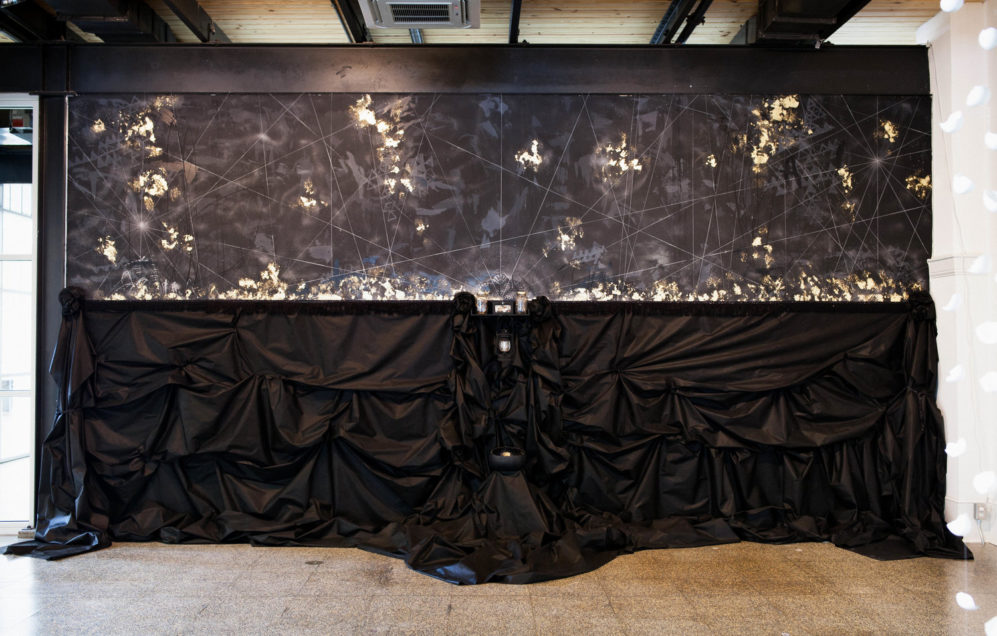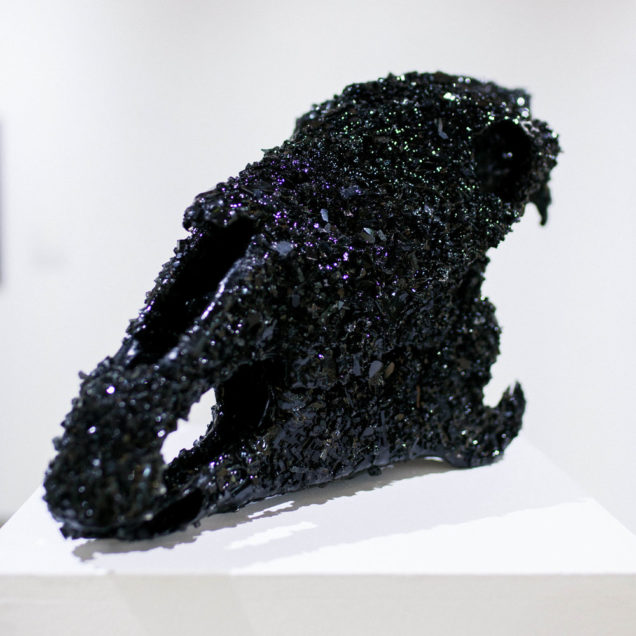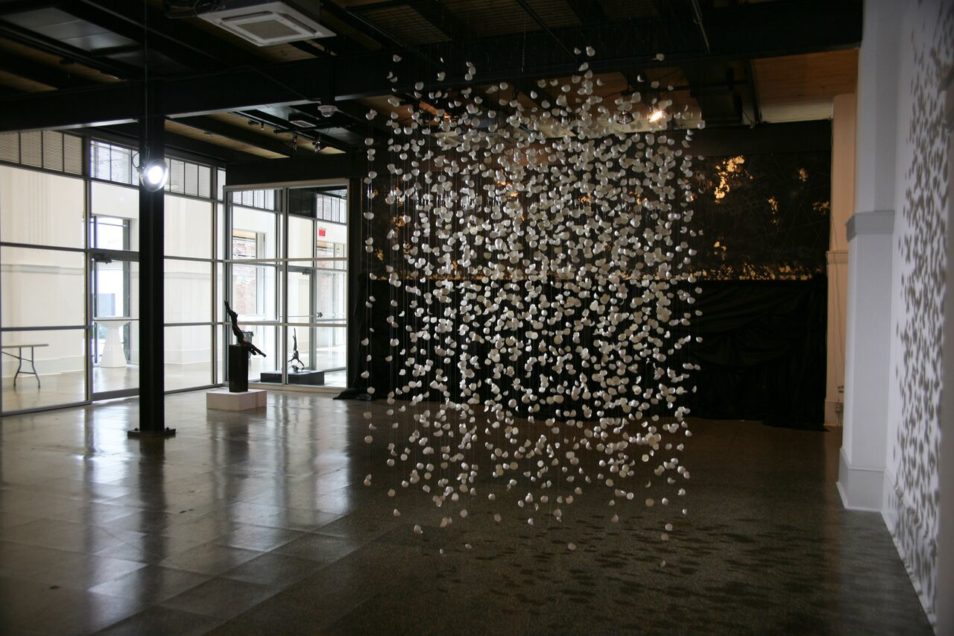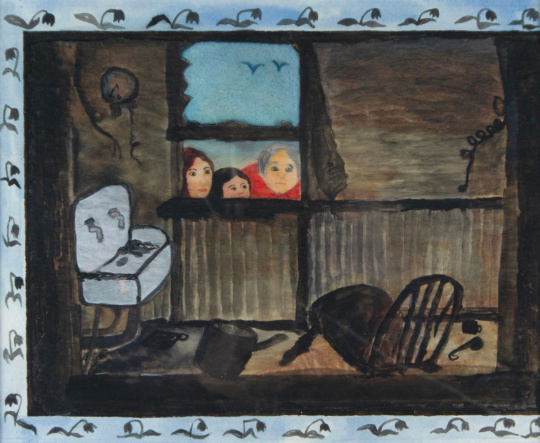Driving into Montgomery for my first visit since moving away from Alabama over a decade ago, I was struck by how wide and empty the streets were, the number of buildings with peeling paint and For Rent signs browning in the window, and the plethora of ornate plaques marking pivotal moments in our nation’s Civil Rights history. I parked around the bend from my destination, 39 Dexter Avenue, right at the spot where Rosa Parks boarded a bus that fateful night in December 1955.
Montgomery is a quiet city in the decades-long process of reckoning with its past and forming a modern identity. The recently opened National Memorial for Peace and Justice and the accompanying Legacy Museum is the most visible of the city’s efforts to acknowledge both historical and contemporary social issues and makes space for previously unheard voices to emerge. Timed to coincide with the memorial’s opening, the exhibition “This is where you’ll find me,” organized by the Atlanta-based organization Dashboard U.S. in collaboration with the historic preservation group Montgomery Builds, approaches the city’s renewal with more subtlety, exploring how place influences personal identity and artistic production.

The exhibition’s 11 artists are diverse in age, race, and artistic training, but all of them call Alabama home, to some extent. The majority of the artists grew up in Alabama but have created homes in other places, like Atlanta or Brooklyn. Many have work in the collection of the Atlanta-based Souls Grown Deep Foundation, and five currently have work from that collection on view at the Metropolitan Museum of Art.

Located in the newly renovated Kress Building at 39 Dexter Avenue, “This is where you’ll find me” is the first major art exhibition in the former department store (opened in 1898 by Samuel H. Kress & Co., and rebuilt in 1929 after a devastating fire). The building spans the broad city block from Dexter to Monroe Street, which was the main hub of black culture and business in its heydey. For most of the building’s history, the Dexter Avenue entrance would have been inaccessible to people of color, a fact that Montgomery-born photographer Sydney A. Foster addresses in an unflinching display of photographs of confident, fashionable young black women in two shop windows that flank the entrance. Inside the gallery, a young woman in another of Foster’s photographs, Jessie J, leads us forward: back turned, arms open, fingertips gliding along the chain link fencing she walks between.

The exhibition spans a large front room and a smaller back room, both glass-walled contemporary constructions in contrast with the original terrazzo floors. Both galleries are dominated by a rich, velvety black painted onto the moveable walls; voluptuous and enveloping in Michi Meko’s altarpiece to feminine spirits; homogenizing the piecemeal “walls” of Butch Anthony’s Cabinet of Curiosities (a miniature of his Seale AL Museum of Wonder). R.C. Hagan’s paranormal deer skulls are coated with a black tarlike substance, bedazzled with “crystal” shards. Blackness is everywhere, and its presence is resonant, magical, and grounding.

The exhibition’s curators at Dashboard describe the artists as “expert craftspeople, compulsive makers, keen observers, and treasure hunters”; indeed, all 11 artists seem to have a fascination with manipulating eclectic materials. Chintia Kirana’s ethereal installation In Time comprises approximately 1,200 eggshells delicately suspended on fishing line in a dense formation. Improvisational collectors like Lonnie Holley and Butch Anthony composed their works from disparate materials – a chair, a feather, a petrified raspberry – and each seems laden with symbolism or a reverential curiosity. Joe Minter’s assemblage of foosball kickers entangled in barbed wire and dusty computer keyboard cords likens modern society’s addictive overdependence on technology to a modern form of enslavement. Vince Buwalda’s giant fabricated metal face, taller than the average person, snarls and whizzes on a loop enabled by small electric motors.

The exhibition is teeming with these incredibly compelling and complex relationships between artists, ideas, and materials. Each work of art seems to pick up the threads laid down by the adjacent work, and the result is an exceptionally tight-knit exhibition, as if each work is part of a greater whole – effectively creating a gallery-wide portrait of the creative spirit emitting from Alabama.
The exhibition is on view through Saturday, June 16, 2018. Also at Kress, Dashboard presents STORYBOOTH, a phone booth turned recording studio that invites the public to share stories which will be publicly accessible online. For the exhibition’s closing day, Dashboard has organized a road trip from Atlanta to Montgomery for a tour of the National Memorial for Peace and Justice, the Legacy Museum, and “This is where you’ll find me” at the Kress building. For more information, please see Dashboard’s Facebook event page.




